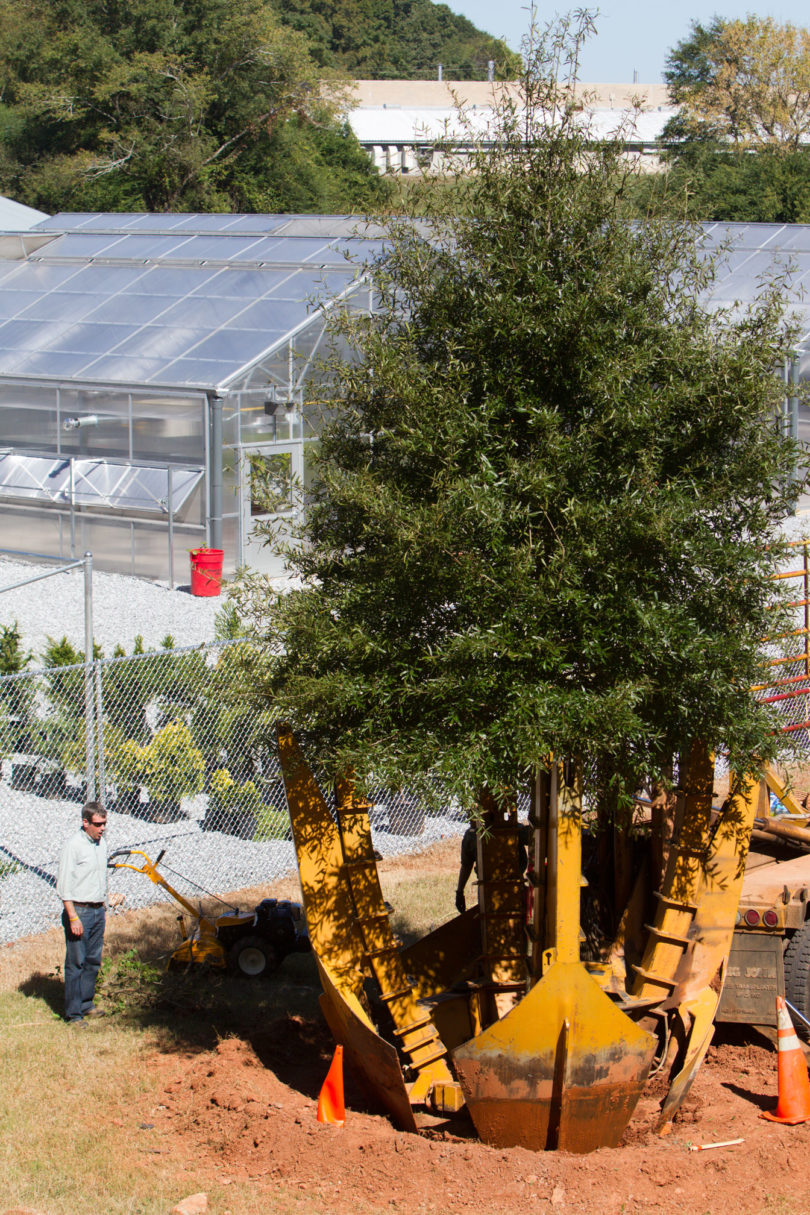About 200 new trees will be planted on campus this year. Starting with baldcyprus trees and willow and overcup oaks at the State Botanical Garden, the trees will be placed all over campus including the Women’s Sports Complex, South Milledge Avenue and East Campus Road by the Intramural Fields.
The plantings, which started earlier this month at the new horticulture complex, are part of a $1 million commitment from the Select Sustainable Tree Trust, which pledged to provide 700-1,000 trees to UGA over a 10-year period in an effort to re-green campus with sustainable shade trees. The trust is affiliated with Select Trees nurseries in Oconee and Oglethorpe counties that were founded by alumni, with many UGA alumni as partners. Contractors working for the UGA Physical Plant are installing the trees.
The first round of plantings started last year with 210 shumard, overcup and nuttall oaks installed in all corners of campus in honor of alumna Susy Dirr who died from cystic fibrosis in 2008. Dirr was the daughter of UGA horticulturist Michael Dirr, who pioneered the urban propagation techniques that Select Trees uses.
Select Trees has used UGA’s campus as an outdoor laboratory and classroom for more than 25 years, said Matt Nielson, vice president of Select Trees.
“We have observed, analyzed and learned much from UGA trees and especially from Dr. Michael Dirr, so we’re thrilled to be able to literally watch our trees take root on campus,” he said.
Not saplings, the planted trees are 4-6 inches in diameter, around 25 feet tall and around 10-14 years old. About 10-15 trees will be installed each week until spring, weather permitting, according to Chris Swann, a landscape architect in the grounds department, who is overseeing the project.
To plant the trees, employees from Tree Spaders of Greenville South Carolina mark the site for the tree and use a backhoe to break up the soil in the area so the trees’ roots will be better able to grow out. Then a large tree spade wets the soil and makes a five-foot deep by five-foot wide hole for the tree. The tree is then planted in a tree ring, mulched and maintained.
The trees are planted in areas that need more shade, in areas near older trees or where the grounds departments have requests for trees, including memorial and anniversary trees.
Last year’s oaks-which all survived-were planted more heavily on the newly developed areas of South and East Campus, according to Dexter Adams, director of the grounds department. There are approximately 6,000 trees in the campus arboretum, which becomes denser toward North Campus, but new trees are still being added there.
Tree plantings are part of the usual cycle of tree removal and tree plantings for the grounds department. Trees are removed for a number of reasons including disease, storm damage, construction and safety concerns.
“We don’t usually plant this many trees-certainly not as many of this size,” Adams said. “We’re offsetting a lot of tree loss and taking advantage of a lot of planting opportunities.”
Richard Hudson, a public service associate in the department of agricultural leadership, education and communication, helped to arrange the donation between the trust and the university.
“What a wonderful legacy,” he said. “When you and I are no longer on this Earth 50 or 60 years from now, there will be a canopy of shade.”
Hudson is working with other university system institutions to arrange for similar plantings across the state’s college and university campuses.








